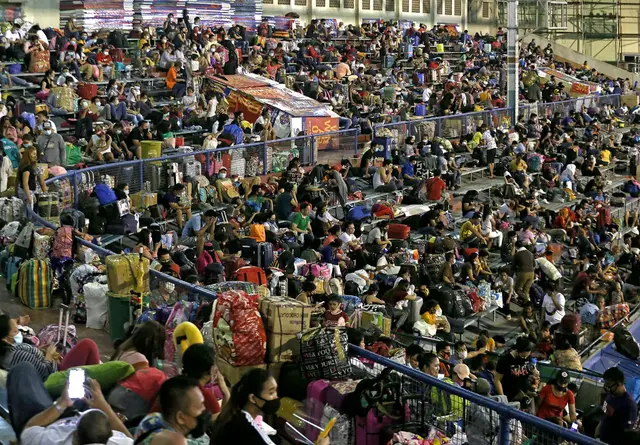The death toll from Friday's oil pipeline blasts in east China's Shandong Province rose to 52 as of 1 p.m. Sunday after four bodies were found at the scene, rescuers said.
Reports and investigations showed that 11 others were missing in the deadly accident, the rescue headquarters said.
Among the dead, four have not yet been identified, according to the rescue headquarters for the blast accident, which occurred at Huangdao district in Qingdao City.
Six of the dead were professional firefighters with the Huangdao oil warehouse of Sinopec, China's largest oil refiner. Ten of the 136 hospitalized are in critical condition.
Crude oil began leaking from an underground pipeline operated by Sinopec at 3:00 a.m. Friday in Huangdao District of Qingdao, according to the municipal government. The valves of the Huangdao oil warehouse were shut about 15 minutes later.
The oil spill then flowed into the city's rainwater pipe network, which empties into Jiaozhou Bay. Explosions occurred at two locations at around 10:30 a.m. Friday when workers were clearing the spill. Fires triggered by the blast were put out at 2 p.m. Friday.
**RESCUE EFFORTS **
Rescue efforts continued Sunday amid heavy rain. The complicated situation and the remains of flammable gas at certain sites in the explosion area hindered the debris-clearing progress.
The air quality in monitored areas has returned to normal, said the Qingdao Environmental Protection Bureau on Sunday.
There will be no secondary blasts at the scene after close monitoring, said Sinopec's press office on Sunday.
Some missing people may have fallen into drainage ditches, said Wang Yongping, an armed police engineer at the search scene. He said they had erected three dams on a two-km drainage ditch to prevent seawater from pouring in.
"The sewage water in the ditch is still rather deep. We cannot work and have to wait until the water is all pumped out," said Li Yanzhao, head of a 19-member rescue team in Qingdao.
The blasts damaged drainage, gas, water and heating supply pipelines, and the repair work is not easy. "The difficulty is great, so is the pressure (we face)," said a Sinopec worker.
About 18,000 residents were evacuated following the explosions, which ripped through concrete-covered roads, overturned vehicles, and shattered the windows and bricks of nearby buildings.
"The floor was shaking and I thought it was an earthquake," said Zhang Xiufen, a survivor whose first-floor office was more than 10 meters away from the nearest pipeline.
At the Huangdao district branch of the hospital affiliated with the Medical College of Qingdao University, Ding Haiwei said his 23-year-old wife, Chen Na, who is seven months pregnant, was injured in the explosion and died despite doctors' efforts.
Xing Yuqing, a worker with Sinopec's pipeline storage and transportation company, said he saw a hole the size of two hands at the pipeline's leak site.
Several minutes after he left the site to handle the spill, which wasflowing into the sea through the drainage network, he heard two big bangs with a few seconds between them.
Sinopec's board chairman, Fu Chengyu, apologized for the accident on Saturday. He vowed all-out efforts to handle the rescue, relief and aftermath and to cooperate with the investigation team of the State Council to find the cause of the accident.
On Friday, Chinese President Xi Jinping asked for maximum efforts in the search for survivors of the blast. Premier Li Keqiang also urged local authorities to improve inspection and supervision and make sure safety procedures are followed.
**LESSON FROM THE ACCIDENT **
On Sunday afternoon, Xi visited some of the injured people and medical staff in the Huangdao branch of the hospital affiliated with the Medical College of Qingdao University. He also offered condolences to the family members of victims who died in the accident.
Xi stressed that a lesson should be drawn and work safety responsibilities should be fulfilled to avoid similar accidents.
The ruptured pipeline in Qingdao was put into use in July 1986. It is the second pipeline linking Dongying City with Huangdao. The pipe measures 711 mm in diameter and runs 248.5 km, with an annual oil transfer capacity of 10 million tons.
Some residents in Huangdao complained they did not know there was an oil pipeline near their residences before the accident. Others claimed that they were not told what had happened when they smelled the oil two hours before the blasts.
There was a concentration of different oil pipelines and dangerous pipes, said Guo Jishan, deputy secretary-general of the Qingdao municipal government. "This time, the explosion of one pipeline affected other nearby pipes. We found the appearance of some other pipelines had changed at the scene."
This accident is an extremely profound lesson, said the official. He told reporters Saturday that relevant departments should have a thorough overhaul of the pipelines to make sure they do not affect each other.
The crude oil on the sea surface at Jiaozhou Bay has been mostly cleared, but thin oil films remain and have been difficult to remove.
Liu Xiankun, an official of the Qingdao Maritime Bureau, said maritime authorities received the accident report several hours after the leak occurred, delaying the best time for clearing operations.
 简体中文
简体中文







